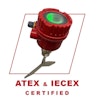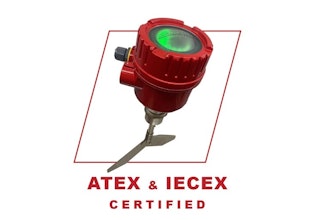ST. LOUIS (AP) -- If you've ever popped a tablet for a tummy ache, chances are it was made here.
For decades, Tums has rolled off billions of antacid tablets from its red brick building at 320 S. Broadway, where 99.9 percent of the world's Tums supply is produced. September marks the 80th anniversary of Tums' production at the five-story plant that nearly stretches a city block across from Busch Stadium.
Stephen Bishop, who oversees operations at the plant where he started as a research scientist 38 years ago, said the simplicity of the product's formula explains its longevity and standing as the No. 1 selling antacid in the nation.
"The basic formula is the same as it was 80 years ago," he said.
Tums ranks first in the U.S. for the number of units sold, 60.2 million bottles or rolls, for the 52-week period that ended Aug. 8, according to SymphonyIRI Group, a Chicago-based market research firm.
Johnson & Johnson, which makes Rolaids, is Tums' next-biggest competitor, with 37.24 million antacid products sold in the U.S. in the past year.
Antacids that work over time instead of fast-acting relief are relatively new to the market, including Procter & Gamble's Prilosec, launched in 2003, and Novartis' Prevacid 24-hour antacid tablets, launched in 2009. Both of those products are among the top five antacid tablets sold in the U.S.
Morningstar analyst Damien Conover said antacid tablets provide lower margins versus prescription medications, but they serve as a buffer for their parent companies that are facing patent challenges on prescription drugs.
"A lot of pharmaceutical companies are facing patent litigation, and companies that are better diversified such as Johnson & Johnson and GlaxoSmithKline have been able to lean a little more on consumer products," Conover said.
Conover said Tums' recognizable brand name helps explain its leading market position.
"The consumer health care business is one area where a strong brand name can really resonate well with consumers and help maintain market share."
Tums added signs outside its building this year to chronicle its history in the stomach-soothing business, but many St. Louisians don't know Tums started here, and don't realize the plant is still in operation, Bishop said.
Anisha Morrell-Charles, a New Orleans native who works at St. Louis Community College, said she didn't know Tums was locally made until she started working downtown three years ago, and she has lived in St. Louis for 20 years.
"I have acid reflux, so it's great for me to know they're next door," she said.
The plant pumped out 4.7 billion Tums tablets in 24 flavors in 2009. Five years ago, Tums' parent company, London-based GlaxoSmithKline, moved the manufacture of its Oscal calcium supplement brands to the St. Louis plant, which added about a half million tablets.
Early next year, the Tums plant will also start making a fiber additive, Citrucel tablets. A GlaxoSmithKline spokeswoman said the addition of Citrucel production to the St. Louis manufacturing site may result in additional jobs, but no job estimates were available.
Tums treats heartburn and indigestion by neutralizing excess stomach acid. Some Tums varieties, which include sugar-free options, contain extra calcium, but brand manager Jack Levy said Tums has maintained its market leadership position by not straying too far from its core ingredients.
"Calcium is something we look at as a bonus for the brand," Levy said. "The cornerstone of our business is heartburn and always has been."
Every day, 70 giant bags of calcium carbonate and sugar, weighing in at 2,000 pounds each, are delivered to the plant and the ingredients are mixed with starch and water. A compressor using nearly five tons of force smashes the mix into tablets.
An air conveyer system sends a steady stream of bottles and caps from one floor in the building directly to the line where the bottles are filled.
From there, Tums are packed into boxes and sent to distribution facilities around the world. Nearly all of the bottles, caps and labels come from Missouri suppliers, totaling $19 million annually.
GlaxoSmithKline is spending $3 million on new bottling equipment and other machinery this year at the St. Louis plant. Combined with maintenance to the more than century-old building, the company is spending $4.8 million on capital upgrades.
While Tums' formula hasn't changed much, its marketing has. In mid-2009, GlaxoSmithKline dropped advertising agency Arnold Worldwide, which held the Tums account for more than 30 years and created the "Tums, Ta, Tum Tum, Tums" jingle.
One of Tums' new commercials created by ad agency Grey Group this year shows a guy in his car eating a soft taco that slaps him in the face.
Levy said the campaign is meant to show the fast relief Tums offers for heartburn or indigestion, and injects some humor in the brand.
"It reflects the changes in eating habits in the U.S. and we wanted an ad that provided information and that would also entertain," Levy said.


















